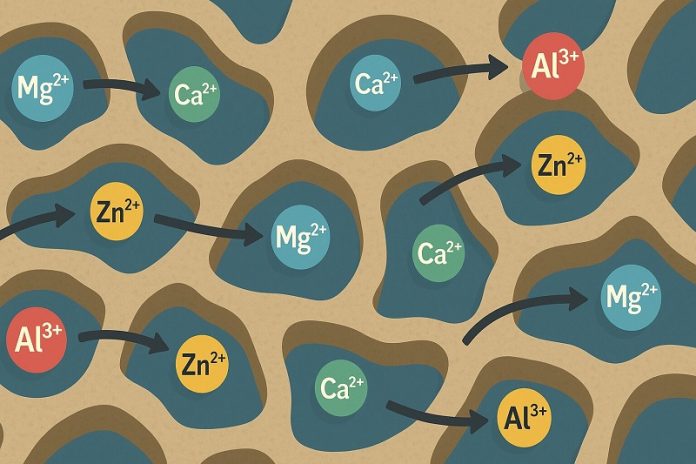
A team of scientists from the New Jersey Institute of Technology (NJIT) has used artificial intelligence (AI) to speed up the search for new battery materials that could one day replace lithium-ion batteries.
These new materials could lead to more affordable, powerful, and environmentally friendly energy storage options.
Lithium-ion batteries are found in everything from smartphones to electric cars.
But as demand grows, the world faces shortages of lithium, as well as concerns about the environmental and ethical costs of mining it.
That’s why researchers are looking for better alternatives—especially batteries that use more common elements like magnesium, calcium, aluminum, or zinc.
These “multivalent-ion” batteries could store more energy than lithium-ion batteries because their ions carry more than one electric charge. But there’s a catch: the larger and heavier multivalent ions move less easily through traditional battery materials. Finding new materials that can handle them is a major challenge.
Professor Dibakar Datta and his team at NJIT took a creative approach. Instead of slowly testing one material at a time in a lab, they turned to AI to do the heavy lifting. Using advanced generative AI models, they quickly searched through thousands of possible crystal structures to find ones that might work well for multivalent-ion batteries.
The researchers used two types of AI tools. One, called a Crystal Diffusion Variational Autoencoder (CDVAE), was trained to imagine new crystal materials based on patterns in known ones. The other, a fine-tuned large language model (LLM), was used to help identify which of those materials were the most stable and likely to be useful in real-world batteries.
This dual-AI system led to the discovery of five brand-new porous materials made from transition metal oxides. These materials have large, open channels that allow the bulky ions in multivalent batteries to move through easily—something that’s been a major obstacle until now.
The team used powerful simulations to check whether their AI-generated materials would be stable and practical. The results showed that the materials could potentially be made in a lab and used in real batteries.
Professor Datta says this is not just about building better batteries. The real achievement is creating a faster, smarter way to find new materials for all kinds of technologies, from clean energy to electronics. Next, the team hopes to work with experimental labs to bring their AI-designed materials to life and move closer to a future beyond lithium.
Source: KSR.



